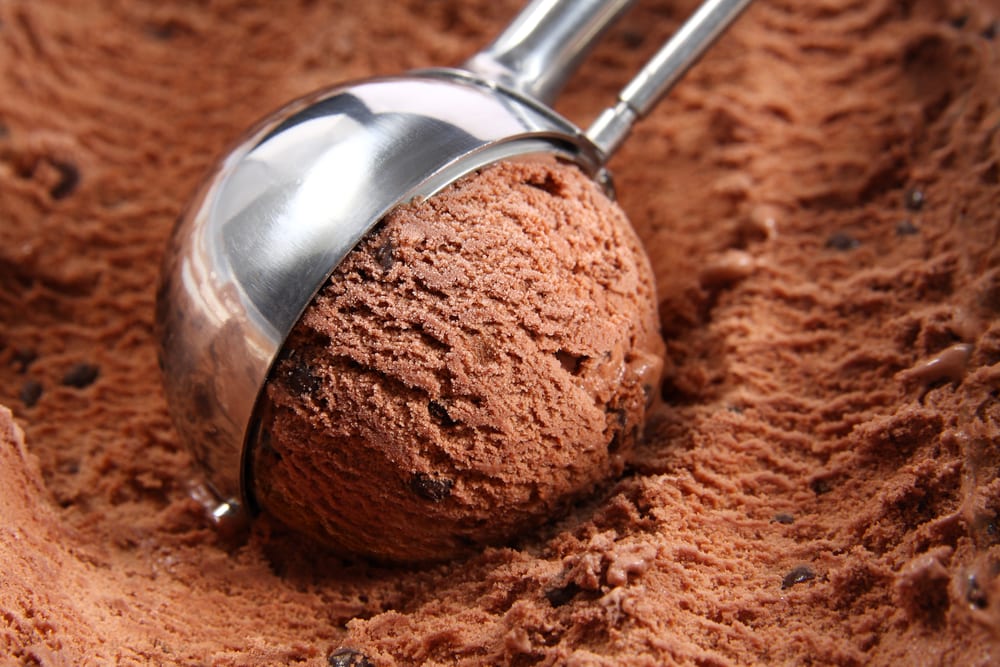Introduction

Ice cream is a beloved dessert enjoyed by people of all ages. Its creamy, sweet, and refreshing taste makes it a popular treat, especially during the summer months. However, like any food item, ice cream is susceptible to spoilage if not stored and handled correctly. Understanding the factors that contribute to ice cream spoilage is important to ensure its safety and maintain its quality. In this article, we will explore the various factors that affect ice cream shelf life, signs of spoilage to look out for, proper storage and handling tips, and the expiration dates and safety of consuming ice cream.
The Popularity Of Ice Cream And Its Potential For Spoilage
Ice cream is a highly popular dessert enjoyed by people all over the world. Its creamy texture and variety of flavors have made it a beloved treat for both children and adults. However, despite its popularity, ice cream is also susceptible to spoilage if not handled and stored properly. It is important to understand the factors that can contribute to ice cream spoilage, such as temperature fluctuations and improper storage techniques, in order to maintain its quality and ensure its safety for consumption.
The Importance Of Understanding Ice Cream Spoilage
Understanding ice cream spoilage is crucial for ensuring food safety and maintaining the quality of this beloved dessert. By knowing the factors that contribute to spoilage, such as temperature fluctuations and improper storage techniques, individuals can take necessary precautions to prevent contamination and extend the shelf life of their ice cream. Recognizing the signs of spoilage, such as changes in appearance and off-flavors, allows consumers to make informed decisions about the safety and freshness of the product. With this knowledge, individuals can enjoy their ice cream worry-free and avoid any health risks associated with consuming spoiled dairy products.
Factors Affecting Ice Cream Shelf Life
Temperature and storage conditions are the primary factors that affect the shelf life of ice cream. Ice cream should be stored at a temperature of -18°C (-0.4°F) or below to maintain its quality and prevent bacterial growth. Fluctuations in temperature can cause the formation of ice crystals, leading to a grainy texture. Additionally, exposure to air can result in the development of freezer burn, which can negatively impact the taste and texture of the ice cream. Proper storage techniques, such as tightly sealing the container and placing it at the back of the freezer, can help extend the shelf life of ice cream.
Temperature And Storage Conditions
Proper temperature and storage conditions play a crucial role in extending the shelf life of ice cream. It is essential to store ice cream at a temperature of -18°C (-0.4°F) or below to maintain its quality and prevent bacterial growth. Fluctuations in temperature can lead to the formation of ice crystals, resulting in a grainy texture. Additionally, exposure to air can cause freezer burn and negatively impact the taste and texture of the ice cream. To ensure maximum freshness, tightly seal the container and store it at the back of the freezer.
Presence Of Air And Ice Crystal Formation
When ice cream is exposed to air, it can lead to the formation of ice crystals. This happens because the air causes moisture in the ice cream to evaporate, resulting in a loss of smoothness and creaminess. Ice crystals give the ice cream a grainy texture, making it less enjoyable to eat. To minimize the presence of air and prevent ice crystal formation, it is important to tightly seal the container and store it in a cold environment. Proper storage will help maintain the quality and texture of the ice cream for a longer period.
Signs Of Ice Cream Spoilage
Signs of ice cream spoilage can be easily recognized through changes in its appearance and texture. If you notice ice crystals forming on the surface or under the lid, this indicates that the ice cream is starting to spoil. Additionally, if the ice cream becomes grainy, mushy, or develops a slimy texture, it is no longer safe to consume. Off-flavors and odors can also indicate spoilage, so trust your senses and discard any ice cream that smells or tastes unusual. Proper storage and prompt consumption can help prevent these signs of spoilage.
Changes In Appearance And Texture
One of the key indicators of ice cream spoilage is changes in its appearance and texture. If you notice ice crystals forming on the surface or under the lid, this is a clear sign that the ice cream is starting to spoil. Additionally, if the ice cream becomes grainy, mushy, or develops a slimy texture, it is no longer safe to consume. These changes in texture can make the ice cream unpleasant to eat and may indicate the growth of bacteria or mold. It is important to promptly discard any ice cream that exhibits these signs of spoilage to avoid any health risks. Proper storage and handling can help prevent these changes in appearance and texture.
Off-flavors And Odors
Off-flavors and odors in ice cream are another indication of spoilage. If you notice any unusual or unpleasant smells, such as a sour or rancid odor, it is a sign that the ice cream has gone bad and should not be consumed. Off-flavors can also develop, resulting in a strange taste or an absence of the usual creamy and sweet flavor. Trust your senses when it comes to ice cream and discard any product that exhibits off-flavors or odors.
Proper Storage And Handling Tips

Proper storage and handling of ice cream is essential to maintain its quality and prevent spoilage. Here are some tips to follow:
- Storage temperature: Keep your ice cream in a freezer set at a temperature of 0°F or below to slow down the growth of bacteria and prevent melting.
- Storage containers: Store ice cream in airtight containers to minimize exposure to air and prevent the formation of ice crystals.
- Cross-contamination: Avoid storing ice cream near strong-smelling foods, as it can absorb odors. Keep it separate from raw meat, seafood, and other potentially contaminated items.
- Freezer burn prevention: To prevent freezer burn, cover the ice cream surface with plastic wrap or parchment paper before sealing the container.
By following these storage and handling tips, you can prolong the shelf life of ice cream and ensure it remains safe to eat.
Optimal Freezing Temperature And Storage Containers
The optimal freezing temperature for ice cream is 0°F or below. This low temperature helps to slow down the growth of bacteria and prevent melting. It is important to store ice cream in airtight containers to minimize exposure to air and prevent the formation of ice crystals. Airtight containers also help maintain the texture and flavor of the ice cream. By storing ice cream at the right temperature and in suitable containers, you can prolong its shelf life and ensure its quality remains intact.
Preventing Cross-contamination And Freezer Burn
Preventing cross-contamination and freezer burn is essential for maintaining the quality and safety of ice cream. Here are some tips to follow:
- Avoid storing different flavors of ice cream together to prevent their flavors from mixing.
- Use separate scoops or utensils for each flavor to avoid cross-contamination.
- Seal ice cream containers tightly to prevent exposure to air and moisture, which can lead to freezer burn.
- Place ice cream containers in the back of the freezer, away from the door, to minimize temperature fluctuations.
- Avoid frequently opening and closing the freezer door to maintain a consistent temperature. This will help prevent freezer burn.
By following these preventive measures, you can ensure that your ice cream remains fresh and delicious for longer periods.
Does Ice Cream Expire?
Yes, ice cream does expire. Like any food product, ice cream has a shelf life and will eventually go bad if not consumed within a certain timeframe. The expiration date on the packaging is a good indicator of when the ice cream is no longer safe to eat. It is important to check the expiration date and follow proper storage and handling guidelines to ensure the safety and quality of the ice cream. If the ice cream is past its expiration date or shows signs of spoilage, it is best to discard it to avoid any potential health risks.
Understanding Expiration Dates And How To Interpret Them
Expiration dates on ice cream containers indicate the date until which the product is expected to remain at its peak quality. It is important to understand how to interpret these dates to ensure the safety and enjoyment of the ice cream. The dates are usually printed as a month and a year, such as “MM/YYYY.” If the ice cream is stored properly, it may still be safe to consume beyond this date. However, it is crucial to inspect the ice cream for any signs of spoilage before consuming it. It is always better to err on the side of caution and discard the ice cream if there are any doubts about its freshness or safety.
Determining If Ice Cream Is Safe To Eat
When determining if ice cream is safe to eat, it is important to consider its appearance, texture, and smell. If the ice cream appears discolored or has ice crystals or a grainy texture, it may have gone bad. Additionally, if there are any unusual or off-putting odors, it is best to discard the ice cream. Taste can also be a good indicator – if the ice cream tastes sour or has an unpleasant flavor, it is likely spoiled. It is always better to err on the side of caution and discard any ice cream that raises concerns about its safety.
Conclusion
In conclusion, proper storage and handling of ice cream are essential to prevent spoilage. Understanding the factors that can affect the shelf life of ice cream, such as temperature and air exposure, is crucial. Regularly checking for signs of spoilage, such as changes in appearance, texture, and off-flavors, is necessary to ensure the safety of consuming ice cream. By following optimal freezing temperatures, using appropriate storage containers, and avoiding cross-contamination, individuals can enjoy their ice cream safely. Remember to always discard any ice cream that raises concerns about its safety to prevent foodborne illnesses.
Importance Of Proper Storage And Handling
Proper storage and handling of ice cream are crucial to prevent spoilage and ensure the safety of consumption. By storing ice cream at the optimal freezing temperature and using appropriate storage containers, individuals can help maintain its quality and extend its shelf life. Additionally, preventing cross-contamination and freezer burn can preserve the texture and flavors of the ice cream. Taking these measures is essential for enjoying ice cream safely and avoiding any potential risks of foodborne illnesses. Remember to always discard any ice cream that shows signs of spoilage to prioritize food safety.
Tips For Enjoying Ice Cream Safely
To safely enjoy ice cream, follow these tips:
- Check the expiration date: Always check the expiration date before consuming ice cream to ensure its freshness and safety.
- Practice proper hygiene: Wash your hands before handling ice cream to avoid any contamination.
- Scoop ice cream properly: Use clean utensils and avoid double-dipping to prevent introducing bacteria into the container.
- Serve immediately: Enjoy ice cream as soon as it’s scooped to prevent melting and the growth of bacteria.
- Store leftovers correctly: If you have leftover ice cream, transfer it to an airtight container and store it in the freezer at the recommended temperature.
- Discard any spoiled or expired ice cream: If you notice any signs of spoilage, such as an off smell or strange texture, discard the ice cream to avoid any health risks.
Remember, proper storage, handling, and hygiene practices are key to enjoying ice cream safely.
Frequently Asked Questions About Ice Cream Spoilage

- How long does ice cream last in the freezer?
Ice cream can typically last for about 2-3 months in the freezer if stored properly. However, its quality may start to deteriorate after a couple of months.
- Can you eat ice cream after it has melted and refrozen?
It is not recommended to eat ice cream that has melted and refrozen. When ice cream melts, it can create an environment for bacteria to grow, and refreezing it may not completely eliminate the bacteria.
- Can you still eat ice cream that has freezer burn?
While freezer burn may not pose a health risk, it can affect the texture and taste of ice cream. It is best to discard ice cream with noticeable freezer burn.
- Can you get sick from eating expired ice cream?
Eating expired ice cream can potentially make you sick, as it may contain harmful bacteria or microorganisms. It is important to check the expiration date and discard any expired ice cream.
- Can you store ice cream at room temperature?
No, it is not safe to store ice cream at room temperature. Ice cream should always be kept frozen to maintain its quality and prevent bacterial growth.
Remember, when in doubt about the safety of ice cream, it is best to err on the side of caution and discard it to avoid any potential health risks.
FAQ: Does Ice Cream Go Bad?
Q: Does ice cream go bad?
A: Yes, ice cream can go bad. Despite being frozen, ice cream has a limited shelf life and can spoil over time.
Q: How can I tell if ice cream has gone bad?
A: There are a few signs to look out for: a change in texture, an off smell or taste, ice crystals forming on the surface, or mold growth. If you notice any of these signs, it’s best to discard the ice cream.
Q: How long does ice cream last in the freezer?
A: The shelf life of ice cream varies depending on factors such as the type, quality, and storage conditions. Generally, commercially packaged ice cream can last for about two to three months in the freezer, while homemade ice cream may last for one to two months.
Q: Can I eat ice cream past its expiration date?
A: It is not recommended to eat ice cream past its expiration date. The expiration date indicates the period during which the ice cream is at its best quality. Consuming ice cream beyond this date increases the risk of foodborne illnesses.
Q: Can I refreeze melted ice cream?
A: It is generally safe to refreeze ice cream that has slightly melted, as long as it has been kept at a safe temperature (below 40°F/4°C) and hasn’t been left out for an extended period. However, refreezing can affect the texture and quality of the ice cream.
Q: How can I extend the shelf life of ice cream?
A: To extend the shelf life of ice cream, it’s important to store it properly. Keep ice cream in the coldest part of your freezer, ideally at a temperature of -10°F (-23°C) or below, to maintain its quality for a longer period. Avoid frequent temperature fluctuations or leaving the container open for extended periods.
Q: What should I do if my freezer malfunctions and the ice cream melts?
A: If a freezer malfunctions and the ice cream melts completely, it is generally recommended to discard it. When ice cream melts and refreezes, it can develop a gritty texture and an unpleasant taste.
Q: Can I eat ice cream with freezer burn?
A: Technically, ice cream that has experienced freezer burn is still safe to eat. However, freezer burn can negatively affect the texture and flavor, resulting in a less enjoyable eating experience. It is best to discard ice cream with extensive freezer burn.
In summary, ice cream does go bad and can spoil over time. It’s important to be aware of the signs of spoilage and to store it properly in the freezer to extend its shelf life. If in doubt, it’s better to err on the side of caution and discard ice cream that seems off.

Soo Good Snack Bar is an upscale snack shop located at 1309 Hermosa Ave. in Hermosa Beach, CA. This family-owned business is the newest addition to the community of Hermosa, and our goal is to create a fun and inviting place where families can enjoy delicious snack foods that fit the beach lifestyle. Check us out today and help yourself to happiness.
